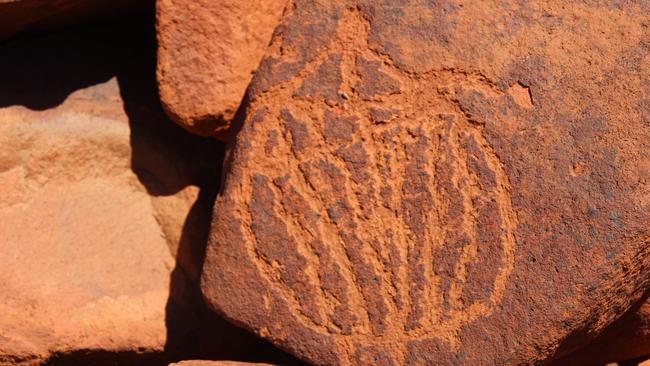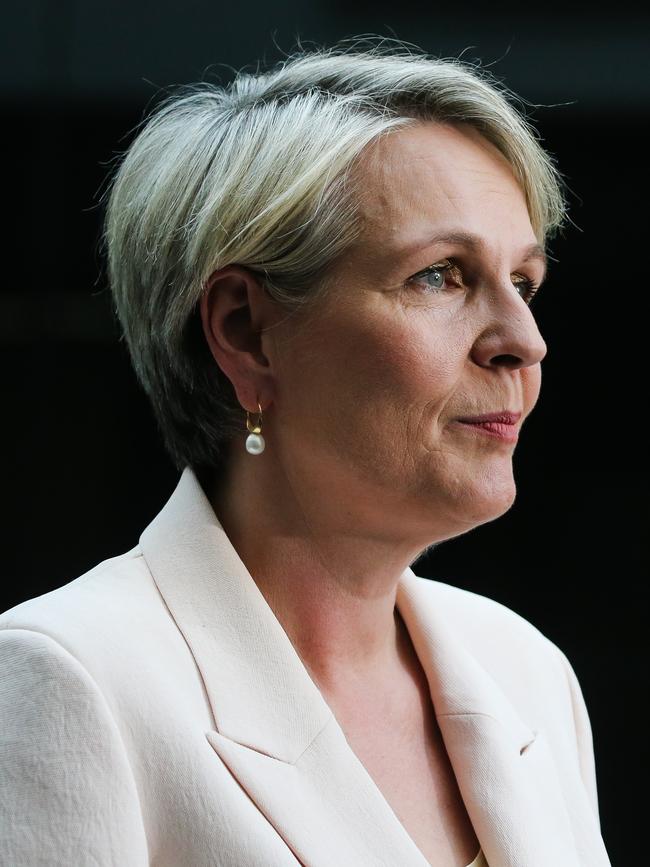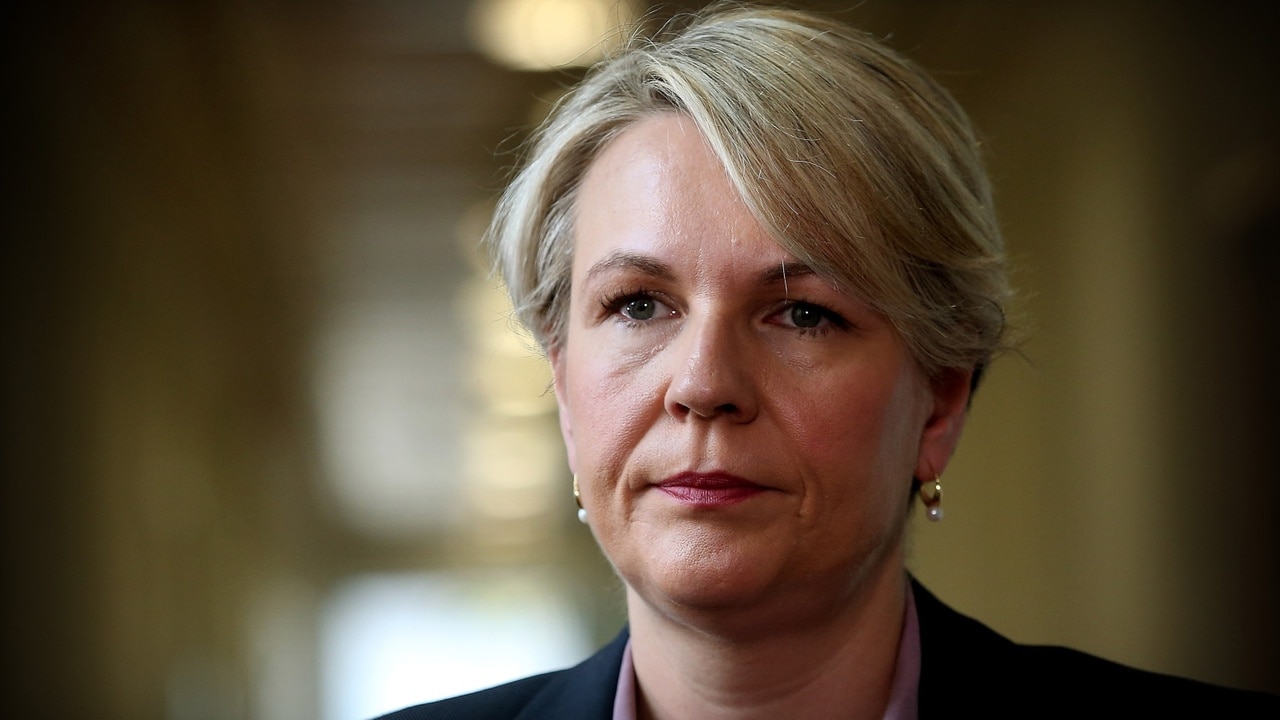Activists hope Plibersek goldmine ban will be good sign in saving Burrup rock art
Tanya Plibersek’s decision against the $1bn Blayney goldmine in NSW has raised hopes inside the campaign to slow or stall multibillion-dollar gas projects on the rock-art rich Burrup.

Tanya Plibersek’s decision against the $1bn Blayney goldmine in NSW’s central west has raised hopes inside the campaign to slow or stall Woodside Energy’s multibillion-dollar gas projects on the rock-art rich Burrup using the same cultural heritage laws.
Benjamin Smith, a University of Western Australia professor of archaeology who has long been associated with efforts against the pace of development on the Burrup, told The Australian that the Burrup was home to far more sites of cultural significance than the area protected by the Environment Minister’s decision to knock back a tailings dam proposed as part of Regis Resources’ Blayney gold project.
“[Ms Plibersek’s decision] gave me hope,” Professor Smith said.
“Clearly the Burrup case has vastly more evidence of cultural significance … It’s been put forward as a World Heritage site. No one’s contesting it. So a World Heritage site surely deserves that same level of intervention, probably more.”


Regis claims Ms Plibersek’s ruling against the location of a proposed tailings dam for the NSW goldmine has killed that project. The Environment Minister’s last-minute intervention in August under section 10 of the Aboriginal and Torres Strait Islander Heritage Protection Act went against the advice of the Orange Local Aboriginal Land Council, which is the recognised representative body for local Wiradjuri people under NSW legislation. The land council says claims by a rival group that the site is highly culturally significant have “no authenticity”.
Ms Plibersek’s decision also goes against the recommendation of the government’s consultant, Ruth Elvin, who told Ms Plibersek there was insufficient evidence for her to be satisfied the site met the definition of “particular significance” under the law.

Ms Plibersek’s decision also defies the findings of anthropologist Philip Clarke, who was commissioned by Regis to examine extensive ethnographic and historical records relating to the local Wiradjuri people. Dr Clarke found nothing in those records to indicate the site had any special cultural significance.
“You have made baseless claims, now the accepted truth,” Orange land council adviser Roy Ah-See told Ms Plibersek in a letter obtained by The Australian.

Like Blayney, the Burrup in WA’s northern Pilbara region is also the subject of a section 10 application by a breakaway Indigenous group that is not part of the formally recognised Indigenous body of the region. Save Our Songlines, which has lodged the application, is headed by former Murujuga Aboriginal Corporation chair Raelene Cooper.
MAC is the body established to represent the traditional owner groups of the Burrup, although its chief executive told a recent Senate hearing that the group was the subject of gag orders and was unable to oppose proposed industrial development in the area.
The Burrup is home to an estimated one million pieces of rock art, some of which dates back tens of thousands of years, and UNESCO is weighing up an application to add it to the World Heritage List. It is also home to some of Australia’s largest industrial projects, including Woodside’s North West Shelf and Pluto LNG plants, Yara International’s Pilbara fertiliser plant, and Perdaman’s $6bn under-construction urea plant.
Professor Smith has long been studying whether emissions from the heavy industry on the Burrup is affecting that rock art.
Government and industry have maintained that there is no clear proof of emissions harming the Burrup rock art, with a report prepared for Ms Plibersek as part of the section 10 application earlier this year finding no sufficient evidence that the area was under threat from industrial emissions.

Professor Smith said new laboratory research on rock samples from the Burrup “unequivocally” showed that lower pH levels eroded the patina layer that enables the rock art. The WA government-backed Murujuga Rock Art Monitoring Strategy, he said, had previously confirmed elevated high acidity levels across the area.
“We’ve tested this under various conditions … and the result is the same in all cases. So that era of denialism, I think, is probably over.
“They can’t keep saying there’s no scientific proof, there’s no scientific evidence. It’s obviously politically convenient to say that, but it’s just not true.”
A spokesman for Woodside said the company took its responsibility to protect and manage cultural heritage seriously.
“We take the necessary steps to manage our impacts, including in response to credible new information, he said. “Research to date on the impacts of emissions on rock art has not been conclusive. In the absence of scientific certainty on the level of emissions which theoretically may affect rock art, Woodside is taking reasonable and practicable measures across its operations and growth projects to minimise emissions.”
Meanwhile, WA Environment Minister Reece Whitby on Sunday confirmed he would travel to Canberra on Monday, where he will seek a meeting with Ms Plibersek.
Both the WA government and many of the state’s big mining companies have expressed concerns about the Albanese government’s proposed Nature Positive laws, amid fears they could add to the regulatory burden facing major projects in the state.





To join the conversation, please log in. Don't have an account? Register
Join the conversation, you are commenting as Logout